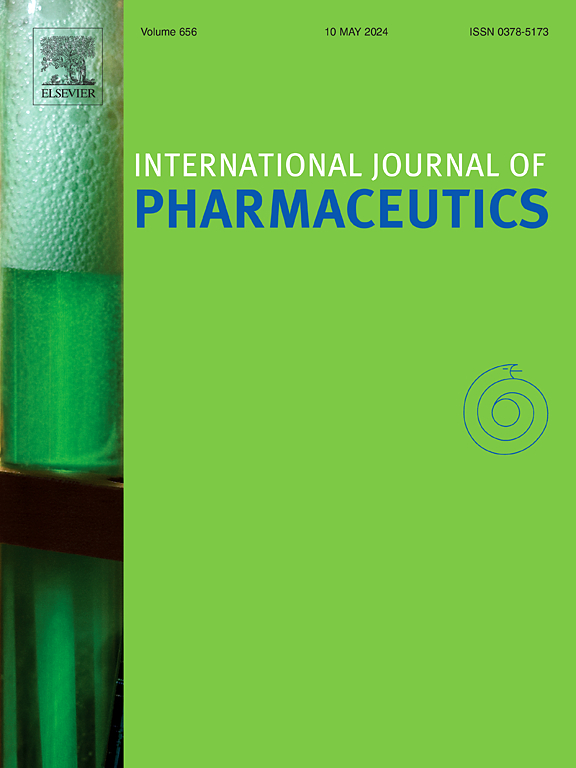对抗肿瘤PARP抑制剂耐药性:联合治疗、纳米技术和其他潜在策略。
IF 5.3
2区 医学
Q1 PHARMACOLOGY & PHARMACY
引用次数: 0
摘要
PARP(聚(adp -核糖)聚合酶)抑制剂(PARPi)在癌症治疗中显示出巨大的潜力,特别是在乳腺癌易感基因(BRCA)突变和其他DNA修复缺陷的肿瘤中。然而,PARPi耐药的发展已成为其临床应用的主要挑战。随着时间的推移,耐药性的出现导致PARPi的疗效降低,影响长期治疗结果和生存率。肿瘤中PARPi的耐药性通常是由于细胞激活替代的DNA修复途径或逃避PARPi的作用,从而降低了治疗效果。因此,克服耐药性对于维持治疗效果和改善患者预后至关重要。本文综述了通过联合治疗和纳米技术治疗克服PARPi耐药的策略。我们首先回顾了目前PARPi的联合治疗,包括抗血管生成治疗、放疗、免疫治疗和化疗,并阐明了它们克服PARPi耐药的机制。此外,本文还重点介绍了纳米技术在提高PARPi有效性和克服耐药性方面的应用。随后,本文提出了几种有前途的策略来解决PARPi耐药性,包括但不限于:PARPi的结构修饰,基因编辑系统的部署,“膜脂疗法”的实施,以及肿瘤细胞代谢的调节。通过整合这些策略,本研究将为克服PARPi在癌症治疗中的耐药提供全面的途径,并为未来的研究和临床实践提供指导。本文章由计算机程序翻译,如有差异,请以英文原文为准。

Combating tumor PARP inhibitor resistance: Combination treatments, nanotechnology, and other potential strategies
PARP (poly (ADP-ribose) polymerase) inhibitors (PARPi) have demonstrated significant potential in cancer treatment, particularly in tumors with breast cancer susceptibility gene (BRCA) mutations and other DNA repair deficiencies. However, the development of resistance to PARPi has become a major challenge in their clinical application. The emergence of drug resistance leads to reduced efficacy of the PARPi over time, impacting long-term treatment outcomes and survival rates. PARPi resistance in tumors often arises as cells activate alternative DNA repair pathways or evade the effect of PARPi, diminishing therapeutic effectiveness. Consequently, overcoming resistance is crucial for maintaining treatment efficacy and improving patient prognosis. This paper reviews the strategies to overcome PARPi resistance through combination treatment and nanotechnology therapy. We first review the current combination therapies with PARPi, including anti-angiogenic therapies, radiotherapies, immunotherapies, and chemotherapies, and elucidate their mechanisms for overcoming PARPi resistance. Additionally, this paper focuses on the application of nanotechnology in improving the effectiveness of PARPi and overcoming drug resistance. Subsequently, this paper presents several promising strategies to tackle PARPi resistance, including but not limited to: structural modifications of PARPi, deployment of gene editing systems, implementation of “membrane lipid therapy,” and modulation of cellular metabolism in tumors. By integrating these strategies, this research will provide comprehensive approaches to overcome the resistance of PARPi in cancer treatment and offer guidance for future research and clinical practice.
求助全文
通过发布文献求助,成功后即可免费获取论文全文。
去求助
来源期刊
CiteScore
10.70
自引率
8.60%
发文量
951
审稿时长
72 days
期刊介绍:
The International Journal of Pharmaceutics is the third most cited journal in the "Pharmacy & Pharmacology" category out of 366 journals, being the true home for pharmaceutical scientists concerned with the physical, chemical and biological properties of devices and delivery systems for drugs, vaccines and biologicals, including their design, manufacture and evaluation. This includes evaluation of the properties of drugs, excipients such as surfactants and polymers and novel materials. The journal has special sections on pharmaceutical nanotechnology and personalized medicines, and publishes research papers, reviews, commentaries and letters to the editor as well as special issues.

 求助内容:
求助内容: 应助结果提醒方式:
应助结果提醒方式:


